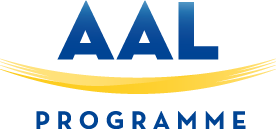Promoting Standards and Interoperability in AAL
Renewed version available online
It is of key importance for the success of AAL solutions on the market that systems are “future-proof”, i.e. can be extended and maintained over a longer period of time, growing and adapting to the changing needs of the user. This can only be achieved with modular solutions, where components can be combined in a flexible manner.
This requires standardized interfaces between systems and system components, a property called “interoperability”.
In 2013-14, the AAL Joint Programme’s “Support Action Aimed at Promoting Standards and Interoperability in the Field of AAL” aimed at improving interoperability of AAL developments by making existing standards more easily accessible. This was done by identifying use-cases covering the topics of the first six AAL-JP calls, deriving representative use cases, and defining standards-based “integration profiles” as guidance on the use of standards for the AAL community.
In 2016, an extension to the support action was performed to improve the use-cases and integration profiles related to the topic of AAL-JP call 6, “ICT-based Solutions for Supporting Occupation in Life of Older Adults”, because in 2013-14 only very limited documentation on this topic had been available. As a result, 17 use cases defined by the call 6 projects were now included into the collection of AAL use cases published by the support action, with a total number of 349 use cases. Based on an analysis of the new use cases, the representative use case for “AAL at the workplace” was revised to better represent the concepts and ideas of the call 6 projects.
The revised use case is called “Work Monitoring and Assistance System” and includes wearable sensors, health and safety-related reminders and the capability of the assistive system to not only display, but also speak messages. Furthermore, an additional use case named “Voluntary Work Communities” was added to represent a theme addressed by several call 6 projects, the support for communities offering and exchanging voluntary work. Finally, the integration profile related to the “Work Monitoring and Assistance System” was revised to address the changes in the representative use case. In summary, the extension has improved the coverage of the topic “AAL at the workplace” in the use-case collection, the representative use cases and integration profiles based on the additional and more mature information on this topic available from the intermediate results of the AAL-JP call 6 projects.

